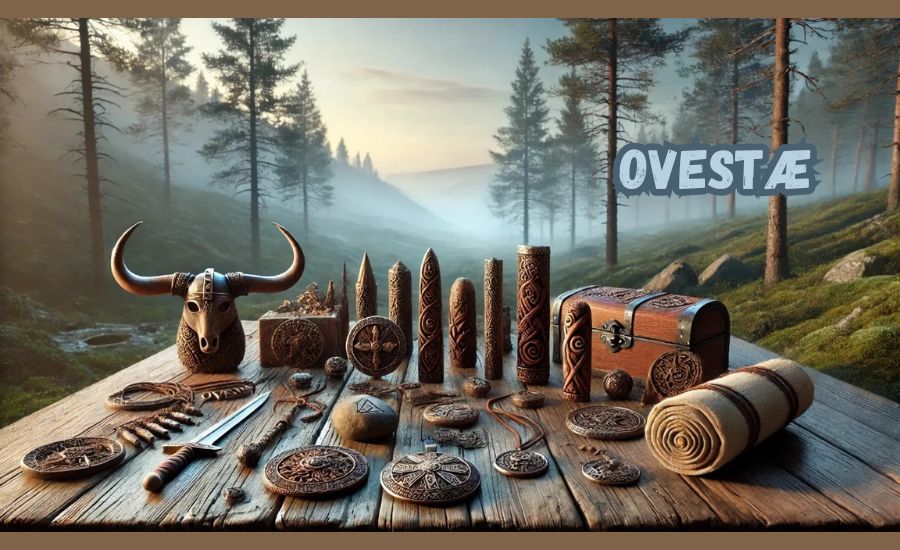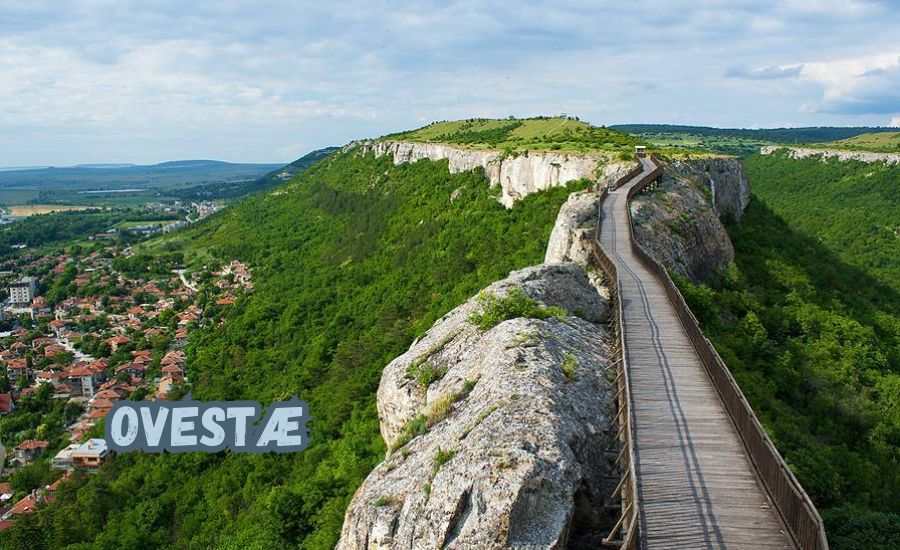Ovestæ is a fun word that sounds like magic. Ovestæ can be food, art, or even a bright new idea you’ll discover right here on Vista Glimpse.
Think of Ovestæ as a tiny door to the North. It opens to Viking tales, cozy kitchens, and smart gadgets. Some people sip it like sweet honey drink; others taste it in a hearty stew. No matter how you meet it, this little name brings big wonder!
Ovestæ: What Does It Really Mean?
Everyone loves a mystery word, and this one is extra special. It rolls off the tongue like a tiny song and fills the brain with bright pictures. Dictionaries have not fixed its story yet, so people look at books, maps, and old songs to guess. Some folk think it names the west wind, whispering through pine trees. Others feel it points to a rich stew bubbling on a winter stove.
Curiosity grows each time the term pops up in talk or text. Kids ask teachers, chefs ask farmers, and writers ask historians. Every group sees the idea through its own colorful window and shares lively answers. By trading notes, they paint a big hopeful mural that keeps changing. The word stays playful because nobody boxes it in. One simple sound keeps everyone learning more.
Researchers now use careful steps to shape a clearer picture. They list letters, study early runes, and match them with daily life long ago. Modern linguists test root parts against Latin and Norse scripts. Data from digital scans helps spot hidden links in old parchment. With fresh tools, scholars feel closer than ever to an official meaning. Yet the door remains open for young minds to add fresh theories and fun.
Ovestæ Origins: A Happy Journey Through Time
Long, long ago, snowy villages glowed under northern lights. Local storytellers whispered about brave sailors carrying strange ideas inside wooden boxes. One bright idea sounded like the breeze itself and settled among the trees. That bright idea became the term celebrated today. Shared fires, carved runes, and quiet songs all helped the name survive frosty nights.
Trade routes soon linked tiny ports to grand river towns. Merchants swapped cloth, salt, and tales while the new word spread like glittering frost. Each ship carried fresh versions, changing vowels here and consonants there. Whole streets buzzed with talk because every traveler loved adding flavor to the term. Over centuries, the word stitched cultures together like warm patchwork.
Modern archives store weathered letters from kings, monks, and sailors who wrote the name with pride. Digital cameras, 3‑D maps, and smart databases now protect those fragile pages. Scientists log every scribble into safe clouds for kids worldwide to explore. Preserving these gems of language ensures tomorrow’s dreamers can trace the journey themselves. Joy grows bigger when history stays alive for all.
How People Use Ovestæ Today in Daily Life

Today, ovestæ brings joy in many ways. In cozy kitchens, some still cook hearty stews using the name as a cheerful nod to the past. In bright classrooms, it becomes a fun word in spelling bees or storybooks. Friends even name pets or games after it just because it sounds so magical. It’s a happy helper in everyday fun.
Designers love using ovestæ for logos or craft shops. The word feels fresh and full of charm, perfect for candles, clothing, or cafes. Some even say it adds luck or style. Kids make up songs or poems using the word and draw pictures to match. It sparks creativity with its soft, musical sound.
Online, ovestæ pops up in usernames or hashtags. People use it to show they’re part of something cool and rare. Some websites use it in branding to feel unique and modern. It fits easily into stories or posts where imagination shines. From toys to tech, the word dances across new spaces every day.
Ovestæ and Nature: A Beautiful Friendship
When folks think of ovestæ, nature often comes to mind. Many link it to breeze blowing across forests and mountains. Others picture lakes shining under sunset skies. The name feels peaceful, like hiking paths, falling leaves, and snowy mornings. It brings calm and wonder all at once.
Gardeners might name a flower patch or a tree grove after ovestæ. It gives a special touch to birdhouses, painted stones, and handmade signs. Even nature clubs use it for hikes or nature journals. The word feels at home under the open sky.
Photographers love using ovestæ to name albums of forest trails, rivers, or clouds. It gives a relaxing atmosphere to the peaceful images.Nature bloggers say it suits the quiet world outdoors. In poems and postcards, the word glows like sunlight through pine needles. It keeps the magic of the earth close to heart.
Ovestæ in Art: Shapes, Colors, and Dreams
Artists love words that spark vision, and ovestæ does just that. Painters splash blues and silvers on canvas, calling them ovestæ skies. Potters mold clay into wind‑shaped bowls. Dancers twirl like leaves in a breeze. This simple word becomes rich art.
Museums now display ovestæ-themed galleries. Sculptures shaped like clouds and light line modern halls. Kids create crayon drawings of what they feel when they hear the word. Some make collages, others build tiny wind machines. Art gives ovestæ new life every day.
Social media spreads the creative spark. Hashtags, reels, and posts show ovestæ-inspired crafts worldwide. Young creators share ideas, and new fans join the wave. With each paint stroke and pose, the word becomes more than sound—it becomes feeling.
How Ovestæ Sounds: Music From the Breeze
The word ovestæ is like music already, but real songs make it shine. Folk singers strum guitars and sing its name in gentle verses. Choirs echo the sound in church halls. The rhythm reminds listeners of wind, water, and stars.
Young musicians write tunes with the word in their lyrics. Schools teach ovestæ songs in music class. Children clap, hum, and sway to its peaceful beat. These moments spark a lifelong love for sound and story.
Even orchestras now use ovestæ as a theme. Violins whisper like air over grass, and drums echo deep roots. Music videos feature wind-blown fields and calm lakes. The harmony of the word reaches deep into hearts.
Ovestæ Around the World: A Word That Travels

Though born in the north, ovestæ is now known far and wide. Travelers hear it in snowy lands and carry it to sunny beaches. Back home, they teach their friends how to say it with care. The word hops continents like a happy bird.
Bloggers write about its charm and mystery. Podcasts explore where they first heard it. Families make crafts with ovestæ letters for holidays. Each new place gives it a local twist, adding flavor to the sound.
Language clubs and cultural centers add ovestæ to word walls. Teachers make games with it in classrooms. Its soft vowels and strong story make it fun for everyone. The more it travels, the more hearts it touches.
Learning With Ovestæ: Fun in School Time
Teachers love to turn cool words into lessons, and ovestæ is perfect. In language class, kids write poems and riddles using it. Geography lessons explore where the word comes from. Art and history blend with joy and ease.
Children enjoy tracing ovestæ on big posters and drawing what it means to them. Some color a west wind, others show stew bowls or magical forests. Learning becomes play when imagination takes the lead.
Even science teachers join the fun. They talk about wind, direction, and climate. Maps are marked with markers, and the weather charts become more lively. Ovestæ brings smiles and knowledge side by side.
The Many Faces of Ovestæ: One Word, Many Meanings
Ovestæ is special because it means many things. To one person, it’s soup. To another, it’s wind. Artists see color, while historians hear stories. That’s what makes it exciting!
Books, songs, and photos all show different sides of the word. Every project shows a new angle. Sharing these meanings helps people connect and learn from each other.
Kids like to guess what ovestæ means to their friends. It starts fun talks and surprises. Everyone’s answer adds magic to the mystery.
Ovestæ and Nature: A Bond With the Wind
Nature and ovestæ go hand in hand. The word often brings thoughts of open skies and strong breezes. Walks in the forest feel different when thinking about its name. The wind sounds softer, almost like it’s talking.
Campers whisper ovestæ while watching stars. Hikers see it in curling leaves. Little ones listen for its name in bird calls. Nature feels fuller when hearts are open to words like this.
Gardens, trails, and parks become magical with ovestæ nearby. Families name trees or picnic spots after it. Nature becomes a friend with a name, and that name is ovestæ.
Ovestæ in Festivals: Joy, Music, and Togetherness
Every year, some towns celebrate ovestæ with big festivals. Streets are filled with jovial the sounds of music and vibrant flags. Children wear costumes inspired by stories and traditions. Booths serve warm food and crafts. It’s like being in a celebration with a significance.
People sing songs that include the word ovestæ. The dancers spin around to the old beats in the glare of twinkling lights. It becomes more than fun—it feels like family time. The events can connect people and allow them to pass family values to the future generation.
Workshops during the festival teach kids how to bake or paint using ovestæ themes. Everyone learns something new while smiling. These events are now spreading to new places. Festivals full of ovestæ make hearts light and feet dance.
You Need To Know: Mount Oeuvre
Ovestæ in Dreams: What Kids Imagine

At bedtime, kids close their eyes and whisper ovestæ like a secret spell. They dream of floating castles, flying boats, and talking clouds. The word feels like a key to secret lands. It gives their minds freedom to wander far.
Some dream journals now start with the word ovestæ. Children write stories of bravery, wonder, and kindness. Parents love seeing how one word can build whole dream worlds. They talk about these dreams at breakfast and giggle together.
Even toy makers use ovestæ in designs. Puzzles, dolls, as well as board games bear the same name. It becomes a bridge between sleep and play. One little word becomes a big adventure in the mind.
Ovestæ for Kindness: A Word That Warms Hearts
Ovestæ is sometimes used to talk about kindness. It’s like saying, “Let the west wind bring smiles.” Kids use it when helping clean up or cheering up a sad friend. Teachers call it the kindness word.
Storybooks now include ovestæ characters who do good deeds. They help animals, share lunches, and show courage. These tales teach little readers to care. It becomes a symbol of love and gentle strength.
Some schools have ovestæ walls where students post good deeds. Others draw hearts with wind symbols to say, “I did something nice today.” The word makes doing good feel even better.
The Future of Ovestæ: What Comes Next?
No one knows exactly where ovestæ will go next, but that’s what makes it magical. Maybe it will become a name for a book, a tech gadget, or a new holiday. People love to guess and hope.
Young writers, coders, and artists might give ovestæ new meaning. Maybe a robot will have that name, or a space mission will use it. Kids who love the word today may shape its tomorrow.
Everyone is part of its journey. With every drawing, story, or song, ovestæ grows. The future feels brighter when a word like ovestæ leads the way.
Why We Love Ovestæ
Ovestæ isn’t just a word—it’s a feeling. It brings warmth, wonder, and a touch of magic. It can mean stew, wind, kindness, or dream, depending on who speaks it. That’s the beauty of it.
In schools, homes, and hearts, ovestæ spreads joy. It’s simple but strong. Kids love how it sounds, adults love what it stands for. Each person will discover their own significance within the story.
So next time you hear or say ovestæ, pause. Feel the breeze, remember the story, or smile at a friend. This little word can do big things in small moments.
Conclusion
Ovestæ is more than just a word—it’s a feeling, a story, and a friend. It brings people together, helps us learn, and makes us smile. From food and art to music and travel, ovestæ shows up in many fun ways. It makes boring days brighter and turns small things into big adventures.
When you say or hear the word ovestæ, think of all the cool things it can mean. Maybe it’s a yummy dish, a windy walk, or a magical poem. No matter where you are, ovestæ can be part of your world. So keep exploring, keep learning, and let ovestæ make your heart happy!
You Should Know: Sodziu
FAQs About Ovestæ
Q: What is ovestæ?
A: Ovestæ is a special word with many meanings like stew, wind, or art. It comes from Nordic places and feels warm and magical.
Q: Is ovestæ a food or a word?
A: It can be both! In some stories, it’s a yummy stew. In others, it’s a word used in poems, songs, or art.
Q: Where does ovestæ come from?
A: Ovestæ comes from cold northern places like Norway and Denmark. People there used it in cooking, stories, and music.
Q: Can kids use ovestæ in school?
A: Yes! Teachers use it in writing, reading, and art. It helps kids learn and have fun with new ideas.
Q: Is ovestæ easy to say?
A: It sounds like “oh-veh-stay.” Try saying it slow and smooth, like a gentle breeze.
Q: What makes ovestæ so special?
A: Ovestæ is special because it can mean many things. It brings people joy, learning, and creativity.
Q: Can I cook ovestæ at home?
A: Yes! Ask an adult to help make the stew. It’s got potatoes, beef and carrots. It is great for the cold winter days.
Q: How can I use ovestæ in fun ways?
A: You can draw it, write poems, sing songs, or act out stories. It’s a great word for art and fun projects!


